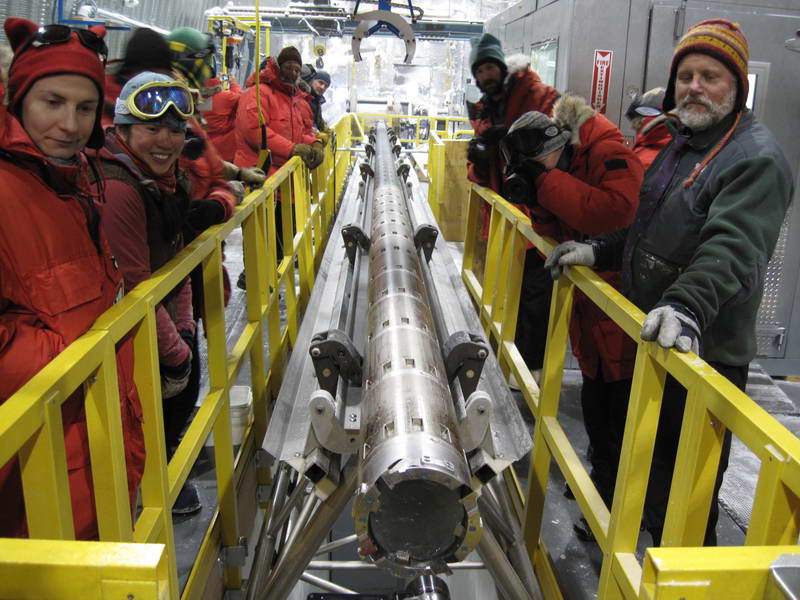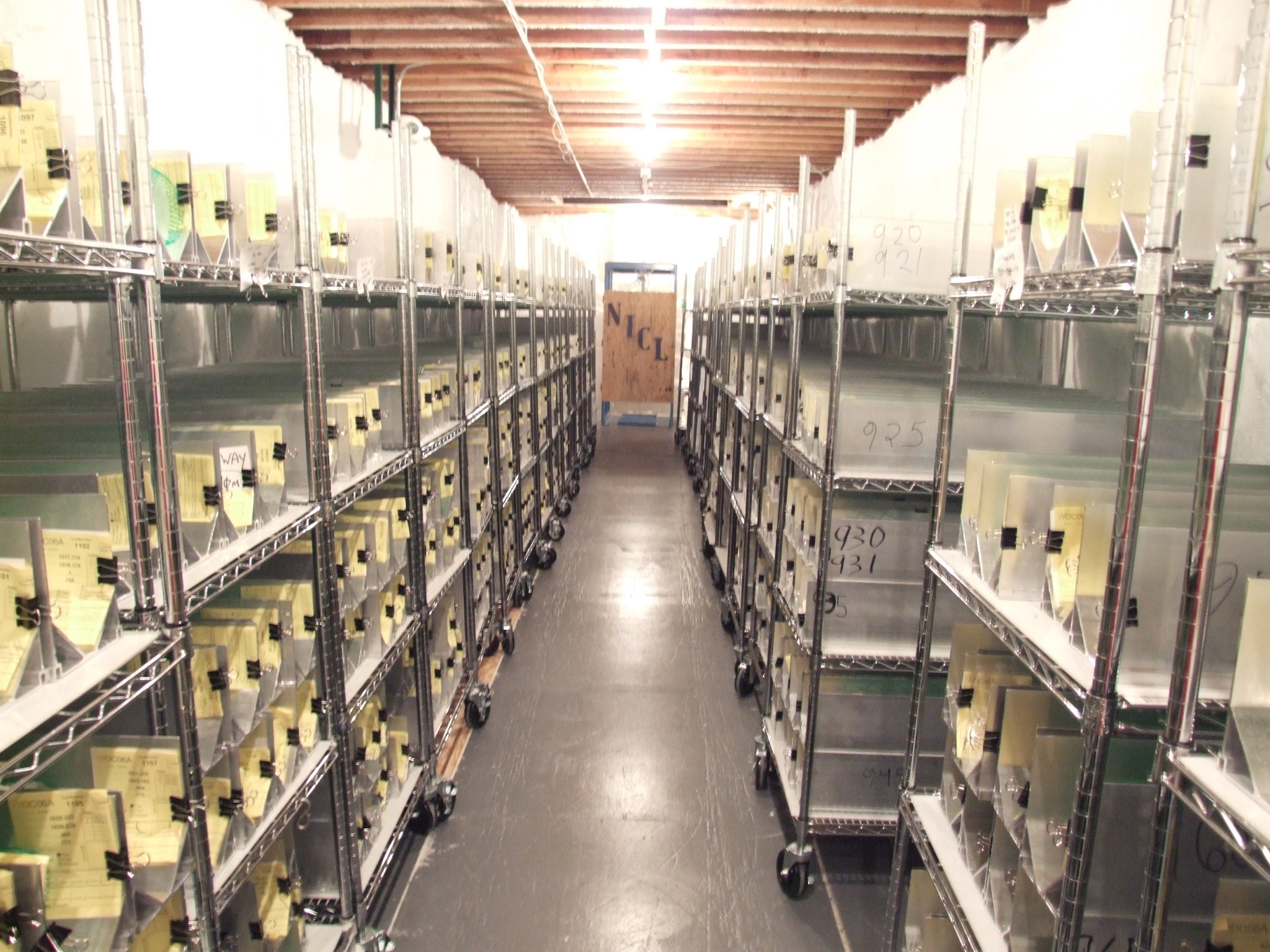DEPSITE A TWO-WEEK DELAY due to budget cuts and heavy equipment problems at camp, the second field season of the West Antarctic Ice Sheet (WAIS) Divide Ice Core Project was extremely successful. The first core of the season was drilled on December 16 from a depth of 580 meters. Around-the-clock drilling operations began on December 22 and 31 days later, with only four rest days, we met our drilling goal for the season. Drilling ended on January 22, one day ahead of schedule, with the arch facility's core storage basement filled to capacity with ice cores. The final borehole depth was 1510 meters in ice that is about 7,700 years old.
Most of the season was spent drilling brittle ice, in which the gas pressure in the ice is sufficient to spontaneously fracture the core when it is brought to the surface. Several new methods were used to maximize the core quality of the brittle ice. The resulting core quality is the best we have ever seen for brittle ice. By 1310 meters depth, the pressure was sufficient to push the air bubbles into clathrates and the ice was no longer brittle. Below this depth we pulled up clear, unfractured 2.5-meter pieces of ice. For a description of the new methods used, please read the February 2009 WAIS Divide Quarterly Update located at http://waisdivide.unh.edu/quarterly-updates.shtml.
In addition to drilling and collecting core, we measured the electrical properties of the ice cores. The electrical measurements were made in the field where the core quality is best. The electrical measurements show strong well-resolved annual layers that will be used to determine the age of the ice. In addition, John Fegyveresi (Penn State) made vertical and horizontal thin sections of the ice below the brittle ice zone, Anais Orsi (Scripps Institution of Oceanography) made borehole temperature measurements (see "How Was Antarctica?") in a different 300-meter borehole that will be used to help interpret the gas records, and Bess Koffman (University of Maine) collected snow pit samples that will be used as part of the trace chemistry work.

We currently have 932 meters of brittle ice (drilled this past season) stored in the arch basement at WAIS Divide. We are allowing the ice to relax over the Antarctic winter so that it will be less susceptible to damage during shipment back to the U.S. in February 2010. This leaves us with the task of recovering the remaining ~2,040 meters of ice and shipping ~3,000 m of ice back to the U.S. If Raytheon Polar Services can increase the time available for drilling by a few weeks per season, and if IDPO-IDDO can recover more core per drill trip down the borehole, we should finish the main drilling in January 2011. The current plan is to stop drilling before we have a hydraulic connection with the basal environment. This is an NSF requirement. That means stopping 50 to 30 meters above the bed of the ice sheet, depending on how accurately we can determine the depth to the bed. It is unlikely we will have a significant amount of time for borehole logging in January 2011, but we will try to do temperature logging in January 2011. We will have about four weeks for logging in November and December 2011. This will be the main logging period. In January 2012 we will start replicate coring, which will continue through the following season (2012-13). Due to anticipated structural issues with the arch facility at WAIS Divide, we anticipate that the 2012-13 season will be the last season of working inside the arch. The borehole will be left in a condition suitable for logging after 2012-13, which will likely consist of just the borehole casing on the ice sheet surface.
As a reminder, investigators from the U.S. need to submit a proposal to NSF to obtain samples from the WAIS Divide ice core or to access the borehole for logging. If you are planning on submitting a proposal you must contact the WAIS Divide Science Coordination Office (SCO) (kendrick@dri.edu) and obtain a letter from the SCO stating that your proposal is consistent with the WAIS Divide operation plan. This letter needs to be submitted with your NSF proposal.
WAIS Divide Science Coordination Office
www.waisdivide.unh.edu


